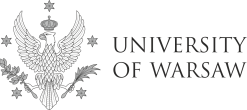Seminar details
Date: 18.11.2025
Łukasz Wyrzykowski (OAUW,PL)
Black Holes with the Gaia Space Mission and a Network of Small Telescopes
Abstract:
Detecting black holes and other compact, non-luminous objects remains one of the major challenges in optical astronomy. The ESA Gaia mission, with its all-sky coverage and exquisitely precise astrometric and photometric time series for nearly two billion sources, offers an unprecedented opportunity to identify such objects through indirect methods. In this seminar, I will focus on the use of gravitational microlensing as a powerful technique for detecting invisible objects in the Milky Way using Gaia data.
I will introduce the Gaia mission and its operational principles, followed by an overview of the Gaia Science Alerts system and its discoveries from 2014 to 2025, highlighting several unusual microlensing events and promising black-hole candidates. I will then describe the global Gaia follow-up network, now comprising roughly 150 small telescopes worldwide, which provides long-term photometric monitoring for microlensing and a wide range of other time-domain phenomena.
Finally, I will present the BHTOM.space platform, developed to coordinate these observations and process heterogeneous imaging data from professional and amateur telescopes alike. Together, Gaia and the follow-up network form a uniquely powerful system for uncovering the population of dark and compact objects in our Galaxy.



